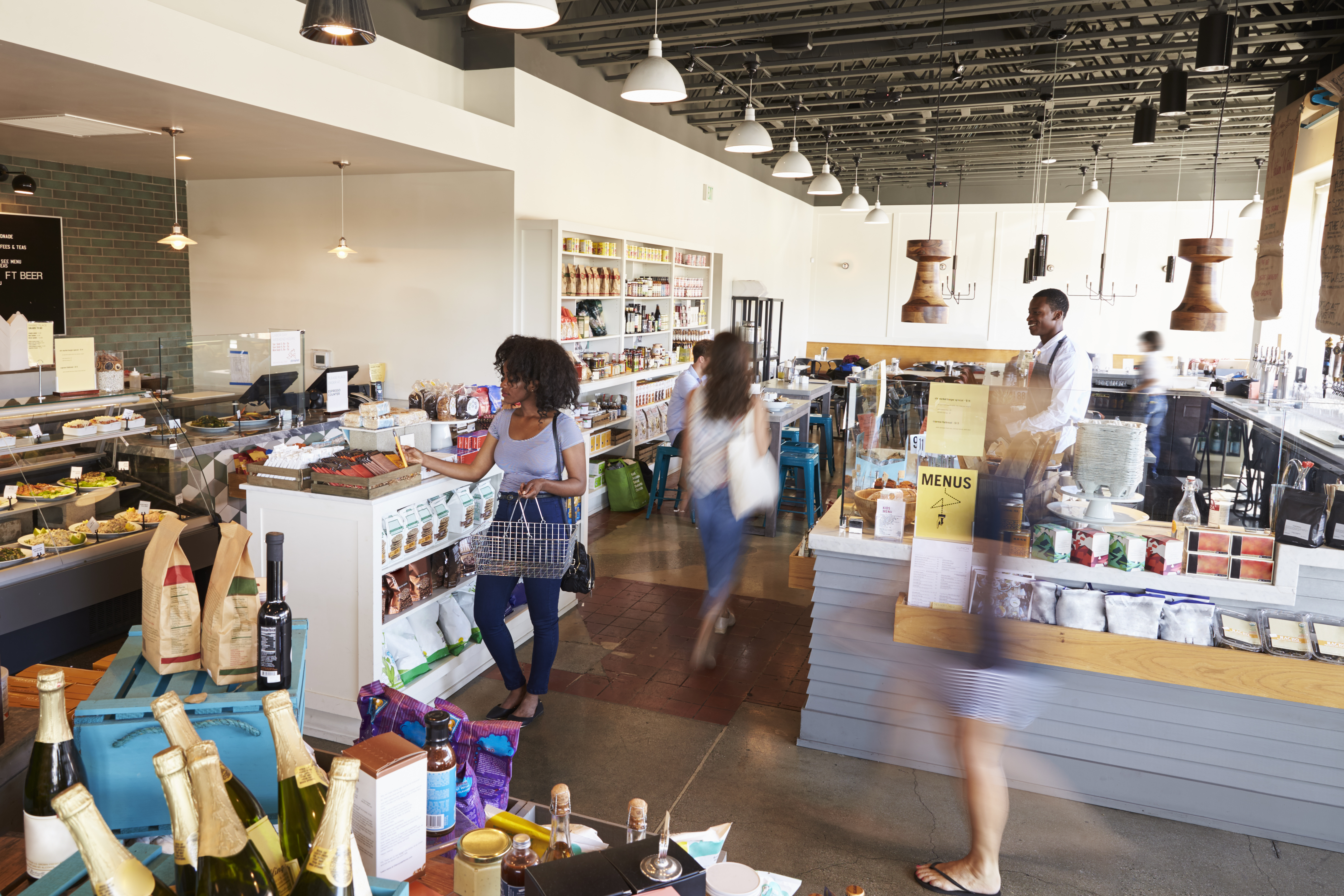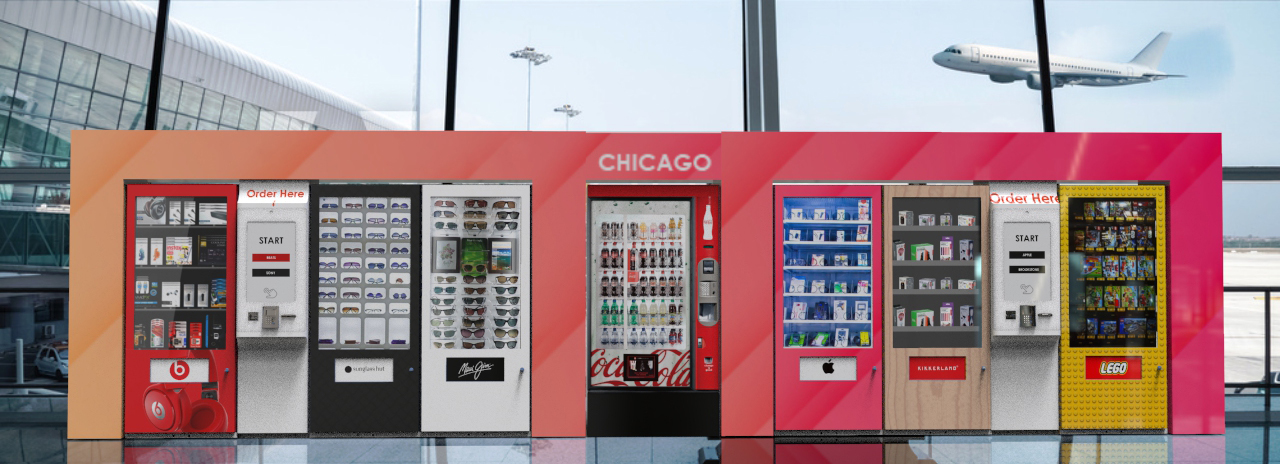3 Reasons Why Automated Retail Isn't Just Convenient, It's A Revolution!
By providing a convenient and efficient way to make purchases, and by enhancing the customer experience, automated retail kiosks and smart lockers are helping businesses to improve their operations and drive sales.
Those are the obvious reasons for retailers to adopt them.
Look deeper — and further ahead — and the true promise of automated retail lies in its potential as a tool to revolutionize every aspect of the brick-and-mortar ecosystem, from the customer experience to back-of-house management and beyond, into the realms of supply-chain management and forward planning based on data analytics.
So when it comes to automated retail, thought leaders in the sector are looking far to the horizon, and talking amongst themselves (at the upcoming NRF Retail’s Big Show 2023 in New York, for example) about its transformational power.
We’ve only just begun to see this future realized — and the time to understand it is now. Here are a few of the strategic ways retailers are already using automated retail, and preparing to use it in the years ahead.
1. Automated retail can help you deliver personalized experiences
Brick-and-mortar retailers already offer customers something that’s difficult to find when buying online: a personally tailored shopping experience.
At the most basic level of personalization, automated retail kiosks and smart lockers allow customers to pay their way and pick up merchandise at the most convenient time and location for them. Customer choice is what drives an omnichannel strategy, after all.
But there’s much more you can deliver through automated retail via the newest generation of products. They include features that can bring delight and build loyalty with customers. Signifi’s Elevate units, for example, are equipped with advanced features, such as touchscreen interfaces and personalized product recommendations, that can make the shopping experience more interactive and engaging.
As the Retail Council of Canada observes: “Already, 80% of shoppers use a mobile device while they shop in-store, so providing a kiosk that can offer the same options their mobile device provides (such as price comparison or inventory) can increase their overall shopping experience and change the way they engage with your products.”
All of this can help businesses build stronger relationships with their customers, and encourage them to return to their store in the future.
Automated kiosks can also help retailers collect feedback, advertise specials, and use screens to demonstrate new products or show customers how to use products. The only real limit here is your creativity.
2. Automated retail can help you use labour power more efficiently, easing “margin strain”
According to a report by McKinsey & Company about the future of automation in retail, some 47% of the work of retail salespeople has the potential to be automated. That’s important to know as the sector experiences “margin strain”: a squeeze on profits caused by rising input costs and wages.
Automation holds the potential to ease these pressures. But while staff (and customers) may worry that automation means humans will be replaced by machines, McKinsey says unlocking the true potential of automation lies not in reducing staff but in maximizing overall productivity — by redeploying sales associates from rote tasks to higher-order functions that can’t be done by machines. Automation is about people working smarter (while machines do the hard, repetitive work).
In other words, “The future of work has arrived in retail … As [retailers] implement automation technology, they create a large bank of hours with a trained and trusted workforce,” McKinsey writes. “The opportunity to redeploy a portion of these hours to more valuable activities provides an opening for a differentiating kind of innovation.”
3. Automated retail can help power a data analytics strategy (to discuss at NRF 2023!)
Retail industry leaders are increasingly looking to data analytics as a tool for future growth. As this report from Hitachi declares: “To say that Big Data is having a moment in the retail industry would be an understatement. Big Data has been breathlessly hailed as a ‘game-changer’ and the ‘future of retail.’ ”
This will be on the minds of attendees at the National Retail Foundation’s NRF’s Big Show 2023, particularly at this discussion about how digital technologies can revolutionize the entire store ecosystem. On the cutting edge of these changes, the retail data analytics market is forecast to reach US$23.8-billion by 2027, as retailers explore the benefits of bringing Big Data into the brick-and-mortar realm.
These benefits include the potential of artificial intelligence for revolutionizing inventory management. IBM spells out how AI could power more efficient inventory functions, for example by enabling retailers to identify fulfilment pain points and automate resupply.
Other potential benefits of injecting AI into retail, according to Hitachi, include using data to incentivize sales through optimized pricing, gain insights into customer journeys, and forecast evolving customer demand.
Automated units in-store can play a crucial part in the data-gathering component of a digital strategy for retailers. While your customers are enjoying enhanced convenience through an automated retail unit, you’re collecting information that can be used to improve their experience, and your operations, over the long run.
Behind the straightforwardly intuitive interface of Signifi’s VISION software, for example, lies a powerful tool that supports advanced analytics and machine learning technology, enabled in part thanks to an ever-growing API library.
With the rise of automated retail and other digital technologies in physical stores, all of these changes are coming to mass retail in the coming years. And as with all long-term trends and strategies, the earlier you start, the further ahead you can expect to be down the road.
The opposite is also true: “The longer companies wait to respond,” as McKinsey writes, “the higher the risk that they will not be able to catch up.”


.png)

